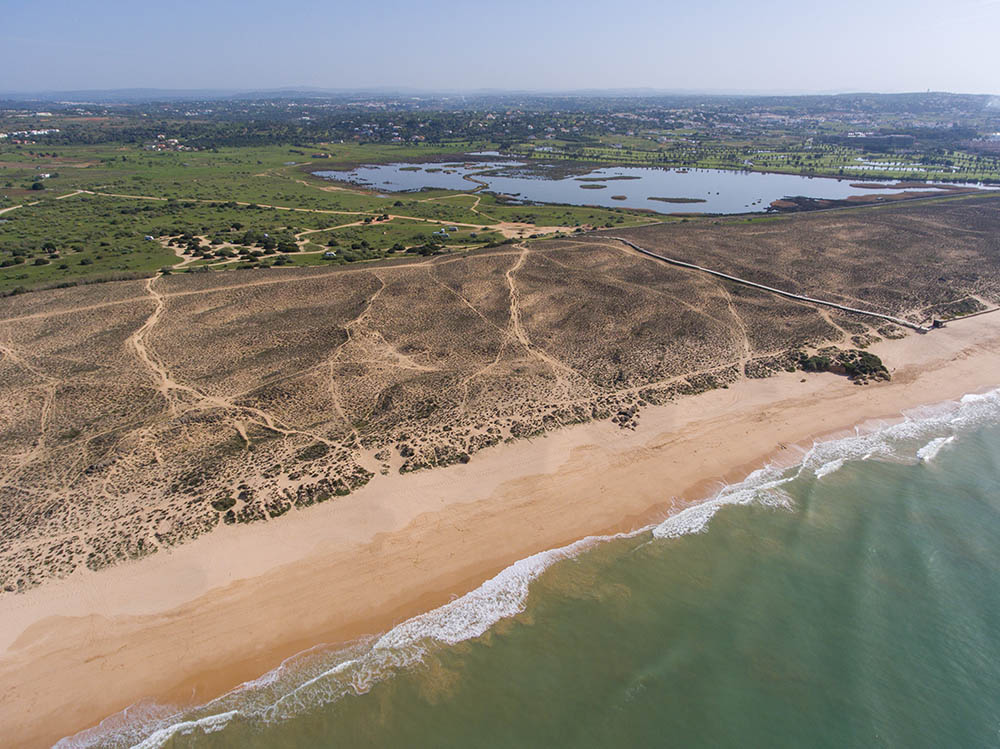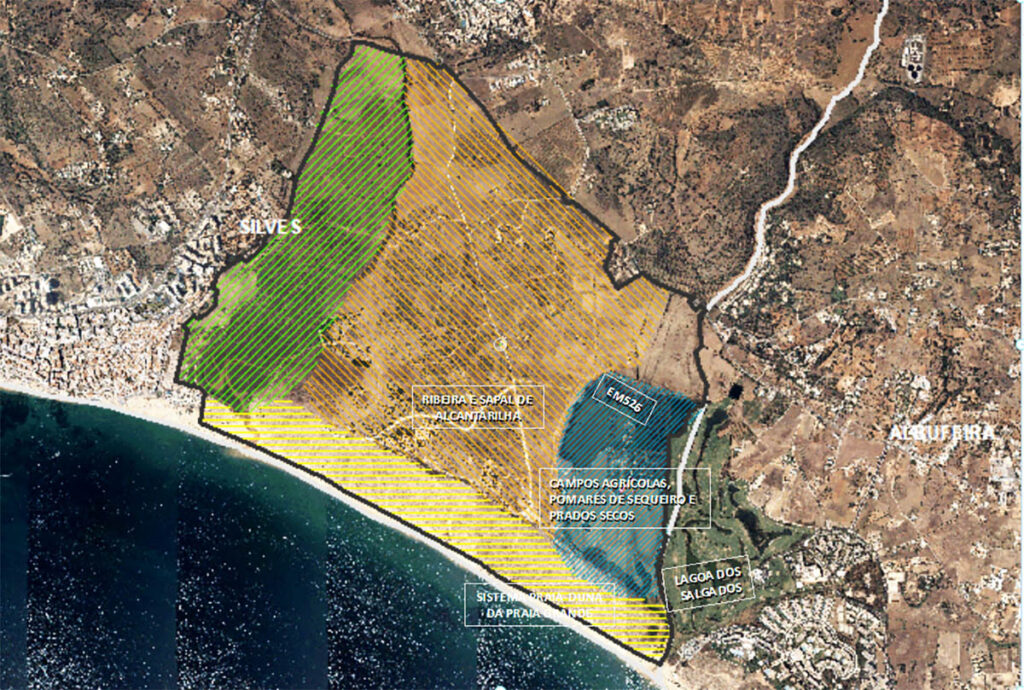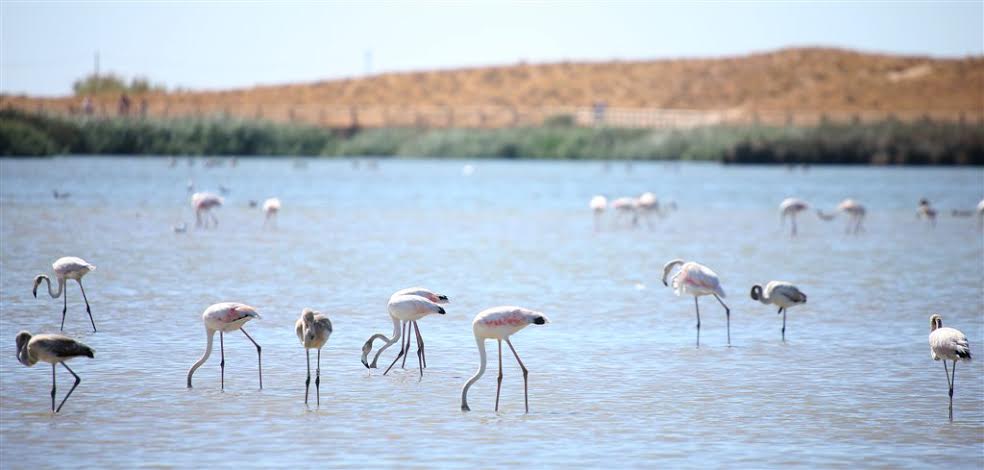A proposal for the creation of the Lagoa dos Salgados Nature Reserve it also extends to the neighboring Sapal de Alcantarilha and the agricultural land between both wetlands. This is the main news that will be announced this morning, in Pêra (Silves), by the Minister of the Environment, about the new protected area, whose public discussion begins today, the 7th.
Despite the initial proposal covering only Lagoa dos Salgados, the final project, presented by the Institute for Nature Conservation and Forests (ICNF) and already discussed with the Municipality of Silves, ends up expanding the area to be classified in a very significant way, as you can see in the following figure:
Thus, the area to be classified as a Nature Reserve is located between Ribeira de Alcantarilha, to the west, and Ribeira de Espiche, to the east, on the border with the municipality of Albufeira.
The area, which extends over 400 hectares, comprises two wetlands, the Ribeira and Sapal de Alcantarilha, to the west, and the Espiche and Lagoa dos Salgados streams, as well as agricultural fields, dryland orchards and dry meadows that mediate between the two wetlands, and also by the dune cord itself. According to ICNF, it is necessary to manage this area "as a whole".
If the creation of the Nature Reserve with these dimensions and scope is approved, after the public discussion phase, the intentions of creating, in the now agricultural lands between the lagoon and the salt marsh, a mega tourism enterprise, in the last few times presented as an 'eco-resort'.
Among the reasons that lead to the proposal to classify it as a nationally protected area, the presence of the largest population nucleus of the Lusitanian endemism Linaria algarviana Chav., a plant that occurs only between Aljezur and Almancil, essential for its survival, is the occurrence of another 12 species of RELAPE plants (rare, endemic, localized, threatened or endangered plants), the fact that the lagoon complex regularly hosts a high diversity of birds, some rare and protected by law, being even essential for the nesting of two dozens of aquatic species of breeding birds. In addition, this area also constitutes a shelter and wintering area for over a thousand wintering water birds, geographically standing out, not only nationally, but even in the Western Mediterranean region, as a stopping point for the migratory birds, on the western route of the “Euphrasia”.
Among the threats that the ICNF identified in its analysis are climate change (drought, extreme events, sea level rise), the risk of reduction or disappearance of traditional agriculture, the financial limitations of public investment at the national level. and regional, the risk of mass tourism activity in the region and the growth of real estate pressure by residential and tourist demand in rural areas.
There are also more specific threats, such as water quality, sources of pollution (namely from agrochemicals) and the risk of eutrophication, abusive visitation, with the proliferation of tracks and trampling, disorderly parking, the advance of invasive plant species, debris deposition, or the very intense seasonal pressure of tourist occupation.
However, the ICNF emphasizes that the "classification of a nature reserve aims not only to protect existing natural values, but also to adopt measures compatible with the objectives of its classification (active conservation) and also to encourage compatible economic activities" , such as activities related to nature tourism or agriculture.
Thus, it is expected that the bathing use of the adjacent beach area, the support parking areas, traditional agriculture will be maintained, which may even benefit from support from the new CAP, as well as traditional grazing.
This will be the first creation of a protected area in the national territory in the last 21 years, since the Natural Reserve of Lagoa de Santo André and Sancha was created, in the municipalities of Sines and Santiago do Cacém.
The proposal for the creation of the new protected area will enter the discussion phase next Thursday, December 9, through the portal Participate.pt and by other means.






















Comments